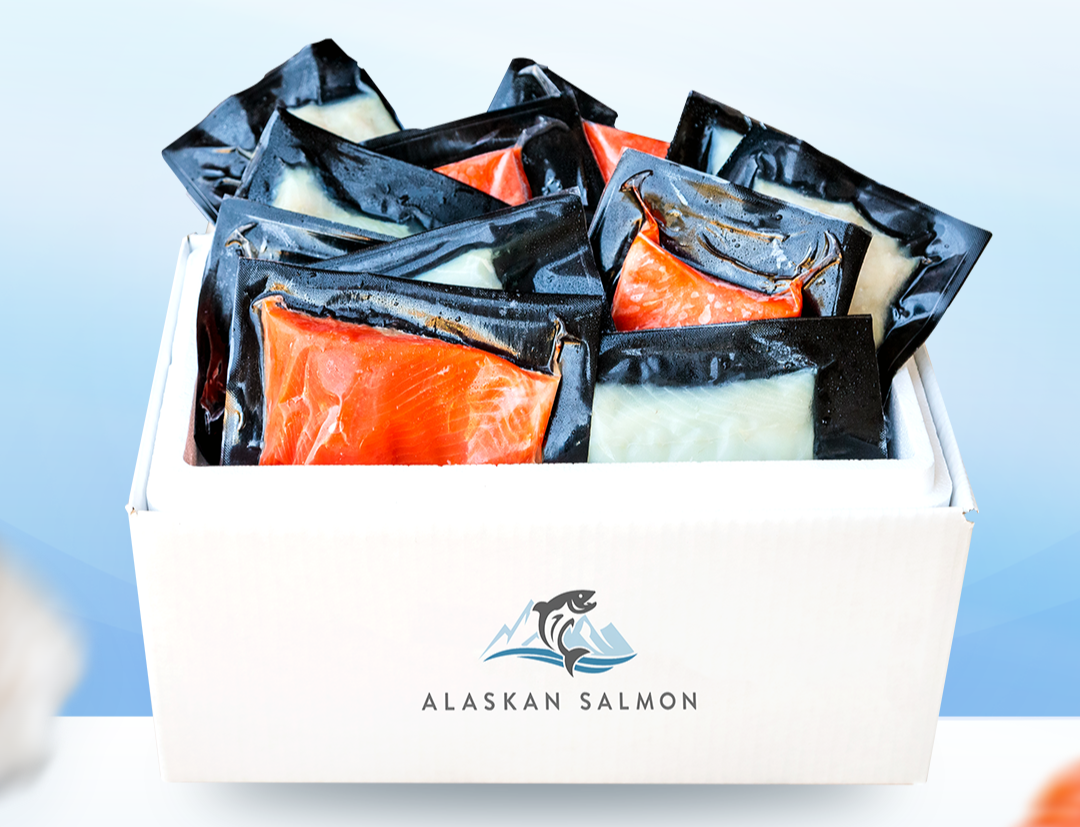Not All Cod are the Same – The Different Types of Cod Explained
Updated on Nov 03, 2025
Cod is one of those fish that almost everyone recognizes, but did you know that not all cod are the same? From mild and flaky Atlantic cod to firmer Greenland cod, each type has its own taste, texture, and best ways to cook.
Shoppers choose cod because it’s easy to prepare and works in so many recipes — but knowing a little about the different types can help you choose the perfect one for your meal.
In this article, we’ll break down the main types of cod, other cod-family species, and even fish that have “cod” in their name but aren’t true cod, so you’ll never be surprised at the grocery store again.
What Exactly is Cod Fish?
Cod is a mild, white fish that belongs to the Gadus genus in the Gadidae family. The most well-known species are Atlantic cod (Gadus morhua), found in the cold waters of the North Atlantic, and Pacific cod (Gadus macrocephalus), found in northern Pacific regions like Alaska and Russia.
Although many fish are labeled “cod,” not all belong to this true cod family — Alaska pollock, for example, is part of the same genus but isn’t commonly called cod.
Cod is loved for its mild flavor, flaky texture, and versatility in cooking. It’s used in classic dishes like fish and chips and can be baked, fried, or grilled with ease. Cod liver is also processed into cod liver oil, a rich source of vitamins A, D, E, and omega-3 fatty acids that support heart and brain health.
Main Types of Cod Fish
Let’s take a closer look at the main types you’re likely to come across. Each one lives in different waters, tastes a little different, and shines in certain recipes. Knowing these details can help you choose the right cod for your kitchen.
Atlantic Cod (Gadus morhua)
Atlantic cod live in the cold, deep waters of the North Atlantic Ocean, from the coasts of North America to northern Europe. They’ve been part of coastal diets for hundreds of years, especially in places like New England, Iceland, and Norway.
This is the classic cod people usually think of. It’s mild and slightly sweet, with large, tender flakes. It’s the star of traditional dishes like fish and chips, and it bakes or roasts beautifully for family dinners.
Pacific Cod (Gadus macrocephalus)
Pacific cod thrive in the northern Pacific Ocean, especially around Alaska, Japan, and Russia. They prefer cool waters and are caught in large numbers for both fresh and frozen seafood markets.
Compared to Atlantic cod, Pacific cod is a little leaner with a milder flavor and firmer flakes. It’s a wonderful choice for lighter meals, like soups, stews, or recipes where you want the fish to soak up herbs, broth, or sauces.
Greenland Cod (Gadus ogac)
Greenland cod live in the icy waters surrounding Greenland and parts of eastern Canada. They are not as common in grocery stores, but they are an important catch for local communities.
The flavor is mild and delicate, somewhat subtler than Atlantic or Pacific cod, while the texture is firm. This makes Greenland cod a great choice for chowders, stews, or slow-cooked dishes where you want the fish to hold its shape.
Other Popular Cod Family (Gadidae) Species
While Atlantic, Pacific, and Greenland cod are the most recognized, the cod family is much larger. Many other members of the Gadidae family are used in kitchens and seafood markets worldwide.
These “relatives” of true cod share a similar mild flavor and flaky texture, which makes them great alternatives when cod isn’t available.
- Haddock (Melanogrammus aeglefinus) - A close cousin of cod and a favorite for fish and chips in the UK. It has a slightly sweeter taste and finer flakes than Atlantic cod.
- Pollock (Pollachius virens) - Sometimes called saithe, pollock is another member of the cod family that’s widely available. It has a stronger flavor and a softer texture compared to cod.
- Hake (various genera within Gadidae) - A lean, white fish found in the Atlantic and Pacific Oceans. Milder and softer than cod, it’s perfect for gentle cooking methods like poaching or steaming.
“Cod” That Aren’t True Cod
Here’s where things get interesting: some fish have “cod” in their name but aren’t actually part of the true cod family. These impostors can look or taste similar, but biologically, they come from completely different families.
Black Cod (sablefish)
Despite its name, black cod isn’t related to cod at all. It’s actually a sablefish, found in the deep waters of the North Pacific. Black cod is prized for its rich, buttery flavor and high omega-3 content. It’s a favorite in Japanese cooking, especially in dishes like miso-marinated sablefish.
Related: Alaskan Sablefish (Black Cod) vs. Cod
Lingcod
Lingcod lives along the Pacific Coast of North America, from Alaska to Baja California. It’s not part of the cod family either, but it has firm, meaty flesh and a mild flavor that many people enjoy. Its bluish-green raw flesh turns white when cooked, making it a fun conversation starter at the dinner table.
Summary
Cod isn’t just one type of fish — it’s a family of favorites, each with its own story. Atlantic cod gives you that classic mild flavor and beautiful flakes, Pacific cod is a leaner and lighter choice, and Greenland cod offers firmness that stands up in hearty dishes.
Even their cousins, like haddock and pollock, make tasty substitutes. And if you ever see “black cod” or “lingcod,” now you’ll know they’re cod in name only!
Experience the difference with Alaskan Salmon’s Alaskan Black Cod. Our sablefish is wild-caught, sushi-grade, flash-frozen, and delivered straight to your doorstep in perfectly hand-cut 6 oz portions.
FAQs
Which type of cod is common in the grocery store?
Most grocery stores sell either Atlantic or Pacific cod. Atlantic cod is more common in fresh seafood counters, while Pacific cod often appears in frozen fillets or budget-friendly options.
How can I tell the difference between the types of cod?
Atlantic cod tends to have larger flakes and a sweeter flavor, while Pacific cod is leaner and firmer. Greenland cod is the firmest of the three and has a more delicate, subtle taste.
Which type of cod is the most sustainable?
Pacific cod is generally considered the more sustainable choice because its fisheries are carefully managed, especially in Alaska. Always look for certifications from organizations like the Marine Stewardship Council (MSC) to be sure.
Which type of cod fish is best?
That depends on what you’re cooking! Atlantic cod is perfect for classic dishes like fish and chips, Pacific cod works well in soups and light meals, and Greenland cod is great for stews or slow-cooked recipes where you want the fish to stay firm.








